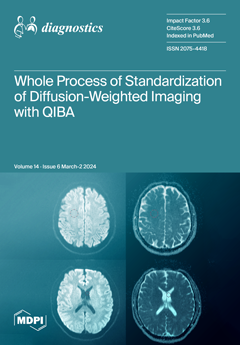Background: To assess the anterior scleral thickness (AST), Schlemm’s canal diameter (SCD), trabecular meshwork diameter (TMD) and conjunctiva tenon capsule thickness (CTT) in high myopic (HM) subjects and HM subjects with glaucoma (HMG) compared to control eyes.
Methods: One hundred and twenty eyes were included, and AST at 0, 1, 2 and 3 mm from the scleral spur, SCD, TMD and CTT were measured.
Results: Mean age was 64.2 ± 11.0 years, and the temporal SCD and temporal TMD were significantly longer in the HMG subjects compared to the controls (380.0 ± 62 μm vs. 316.7 ± 72 μm,
p = 0.001) and (637.6 ± 113 μm vs. 512.1 ± 97 μm,
p = 0.000), respectively. There were no significant differences between the HM and HMG subjects in SCD and TMD (all
p > 0.025). Compared to the HM subjects, the temporal AST0 (432.5 ± 79 μm vs. 532.8 ± 99 μm,
p = 0.000), temporal AST1 (383.9 ± 64 μm vs. 460.5 ± 80 μm,
p = 0.000), temporal AST2 (404.0 ± 68 μm vs. 464.0 ± 88 μm,
p = 0.006) and temporal AST3 (403.0 ± 80 μm vs. 458.1 ± 91 μm,
p = 0.014) were significantly thinner in the HMG group. No differences were found between the CTT in the three groups (all
p > 0.025).
Conclusions: Our data indicate a thinner AST in HMG subjects and no differences in SCD and TMD between HM and HMG subjects.
Full article






